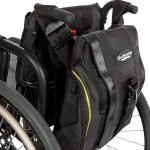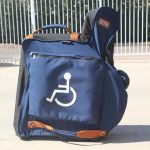Travel in 2020 was limited, to say the least. The pandemic created a situation that called for us to do the opposite: stay home as much as possible. But as 2021 progresses and the administration of vaccines continues, we’re now facing a mixed bag.
Some states are opening up their businesses back up, even to the point of allowing full stadiums for baseball games. Others are keeping health-based mandates in place, and still others are adding new restrictions. The number of new cases is growing in some places, while in others, it’s on the decline. There are also virus variants to consider.
What does all this mean for would-be travelers eager to get back out there, especially those whose considerations include wheelchair accessibility? Take a look:
More People on the Road
The CDC is cautioning travelers to be careful of sharing tight spaces with other people. If you’re not fully vaccinated, that means wearing masks, social distancing, and watching your hands frequently, especially if you’re traveling on buses, trains, airplanes, or cruise ships. (Even if you are vaccinated, masks are still advised in many situations.)
It also means more people are out and about in their cars. With more vehicles returning to the road, you’ll naturally need to be more careful about hazards like congestion and unsafe drivers, which can increase the likelihood of a traffic accident. It’s important to know what to do if you’re involved in an accident and to have the proper insurance beforehand.
Surging Gas Prices
More businesses reopening and more vehicles back out on the road have created a greater demand for fuel, which, in turn, has driven prices up. According to AAA, prices the first week of April 2021 stood at $2.87 a gallon, which was 15 cents higher than a month earlier.
You’ll want to factor gas prices into your travel budget. It might mean adjusting your plans about where to go. The highest gas prices in early April were in Nevada and Oregon, with the lowest in Mississippi and Texas — two states that have reopened completely, but also which are close to oil drilling operations and refineries.
Air Travel is an Option
With more people getting vaccinated, more travelers are taking to the skies again. Demand is increasing — and, just as with gasoline, that means an increase in prices. Airlines are even more motivated to boost ticket prices as they look to pay down debts they ran up during the worst of the pandemic.
If you use a wheelchair or are traveling with a child who does, it especially pays to plan ahead. Among other things, you’ll want to provide the airline with details about the level of assistance you’ll need and whether you’ll need an aisle seat. You’ll also need to arrange with the ticket agent to gate-check your wheelchair rather than placing it in baggage claim.
Safety is Priority at Accommodations
During the pandemic, many hotels, motels, and vacation rentals adjusted their cleaning practices to be sure they were safe. Even as the pandemic eventually eases, it’s still a good idea to inquire about their practices of disinfecting rooms, mask policies, and maintaining social distancing in lobbies and other common areas.
Also, it’s as important as ever to know about accessibility ahead of time. If you’re staying at a motel, does it have an elevator? Is it wide and deep enough to allow easy access via wheelchair? Can you request a first-floor room? For answers to questions like these, call ahead to see what kind of services your accommodations regularly offer to guests with wheelchairs.
You’ll also want to know if the facility is ADA-compliant and offers ramps. You might even want to take a look at facility blueprints, if you can, to get an idea of corridor width, ease of maneuvering, accessible exits, and other features. Some larger hotels post floor plans on their websites to aid customers in emergency evacuation preparation.
User-Friendly Apps
From weather to road conditions to room reservations, you can do almost anything from your phone these days. Take advantage of apps that can help you plan your trip.
Google Maps has even added a feature that shows accessibility information for those using a wheelchair. It identifies whether the place you’re going offers accessible entrances, seating, restrooms, and parking. All you have to do is find the settings tab in the app (upper right-hand corner), click “accessibility settings,” and turn on “accessible places.”
Apps with these capabilities will be even more useful as more venues begin to reopen for movies, concerts, and other forms of entertainment.
A lot of things changed when travel shut down during the pandemic, and more changes are in the offing now. It’s not really a matter of reverting to the way we used to do things, or even reaching a “new normal,” but of staying flexible as the landscape continues to shift. You can expect a lot of that in the year ahead, and knowing what to expect will help you stay prepared.









